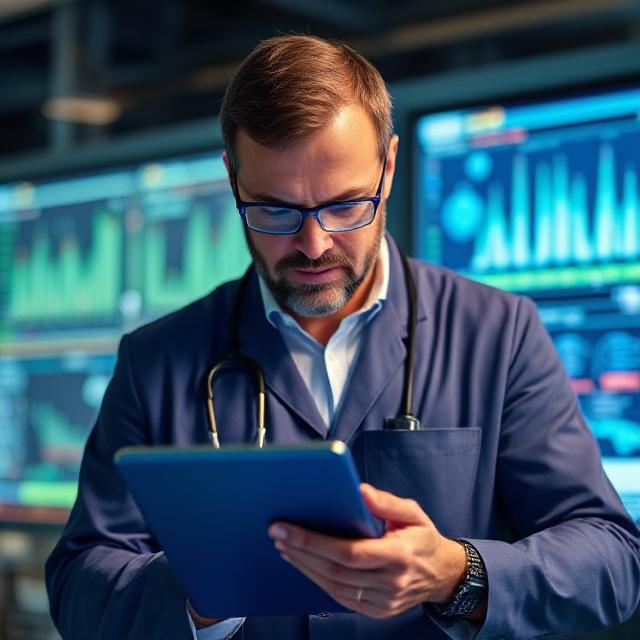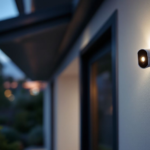Technology has become a cornerstone of modern healthcare, transforming the way medical diagnostics are conducted. From advanced software applications to groundbreaking devices, the healthcare industry is embracing innovation at an unprecedented pace. These technological advancements are not only improving diagnostic accuracy but are also enhancing the patient experience, making it faster and more efficient. In this blog, we’ll explore the ways that technology is shaping the future of medical diagnostics, with a special focus on innovations in eye care.
Cloud-Based Data Systems and Big Data Analytics
Cloud technology has revolutionized how medical data is stored and accessed. With cloud-based systems, healthcare providers can now access vast amounts of patient information in real time, regardless of location. This has made it easier to integrate diagnostic results from various sources, including laboratories, imaging centers, and patient records.
Big data analytics, powered by the cloud, allows healthcare providers to analyze trends across large datasets, which can help to predict health conditions and improve diagnostic processes. By sifting through billions of data points, algorithms can identify previously unnoticed correlations and suggest early interventions. This is particularly valuable in the context of chronic diseases, where early detection can lead to more effective management.
3D Imaging and Advanced Diagnostics
The field of medical imaging has also seen significant improvements with the advent of 3D imaging technologies. These advanced imaging techniques provide doctors with detailed, multidimensional views of the body, allowing for a more comprehensive understanding of medical conditions.
In addition to traditional CT scans and MRIs, 3D imaging allows healthcare providers to visualize the anatomy in a more dynamic and detailed way. Surgeons, for instance, can now plan complex procedures with greater precision, reducing the risk of complications and improving outcomes. This is particularly important in diagnosing and treating conditions like cancer, where understanding the exact location and size of a tumor is crucial.
Blockchain for Secure Medical Data Sharing
As healthcare becomes more digital, ensuring the security and privacy of medical data has become a critical concern. Blockchain technology is emerging as a powerful solution for securing patient records and facilitating secure data sharing between healthcare providers.
Blockchain provides an immutable, transparent ledger of all transactions, making it virtually impossible to alter medical records without detection. By leveraging blockchain, healthcare institutions can ensure that patient data is both secure and accessible to the appropriate medical professionals, improving diagnostic accuracy and collaboration. This innovation fosters trust among patients and healthcare providers and supports more accurate diagnoses by making vital information readily available.
Innovative Tools for Home Diagnostics
Advancements in home diagnostic tools are making it easier for patients to monitor their health without the need for frequent visits to healthcare facilities. From at-home blood pressure monitors to portable ultrasound devices, these tools are enabling patients to take control of their health and receive diagnostic feedback in real time.
For instance, portable ECG devices allow people with heart conditions to monitor their heart health at home and immediately send the data to their healthcare provider. Similarly, home-use blood glucose meters empower patients with diabetes to track their blood sugar levels regularly, reducing the likelihood of complications. These devices help to detect changes in health status early, prompting timely intervention and better long-term outcomes.
Technology’s Impact on Eye Care Diagnostics
In the field of eye care, technology is making great strides in providing more accurate, non-invasive diagnostic tools. For example, artificial intelligence is now being used to analyze digital eye scans and detect conditions like age-related macular degeneration (AMD) and diabetic retinopathy. AI algorithms can spot subtle changes in the retina that may go unnoticed by human eyes, enabling early detection and preventing vision loss. Another major breakthrough in eye care technology is the development of smart contact lenses and iCare tonometers, which are designed to monitor intraocular pressure continuously, providing valuable insights for patients at risk of glaucoma. The data collected by the lenses is transmitted to a smartphone app, allowing patients and doctors to track changes over time and adjust treatment plans as needed.
The Road Ahead: Integrating Technology with Patient Care
As we look to the future, the integration of technology with patient care will continue to evolve, offering new opportunities for more personalized and efficient diagnostics. From precision medicine, which tailors treatments to an individual’s genetic makeup, to real-time health monitoring through wearable devices, the landscape of medical diagnostics is set to undergo further transformation.
With these technological advancements, patients will benefit from faster, more accurate diagnoses, and healthcare systems will be better equipped to handle the growing demand for services. The future of medical diagnostics is one of enhanced precision, convenience, and accessibility, ultimately leading to better outcomes for patients across the globe.






